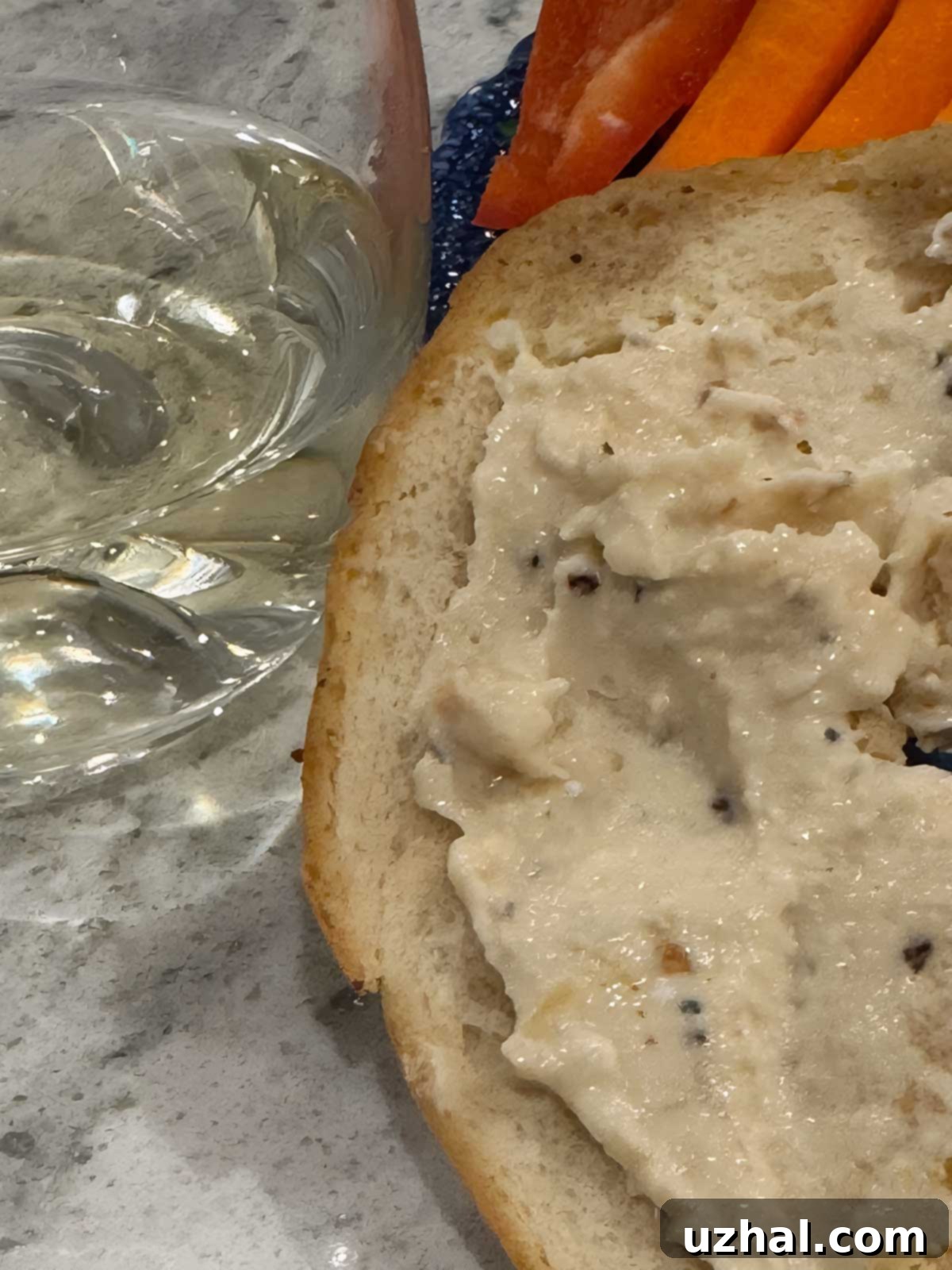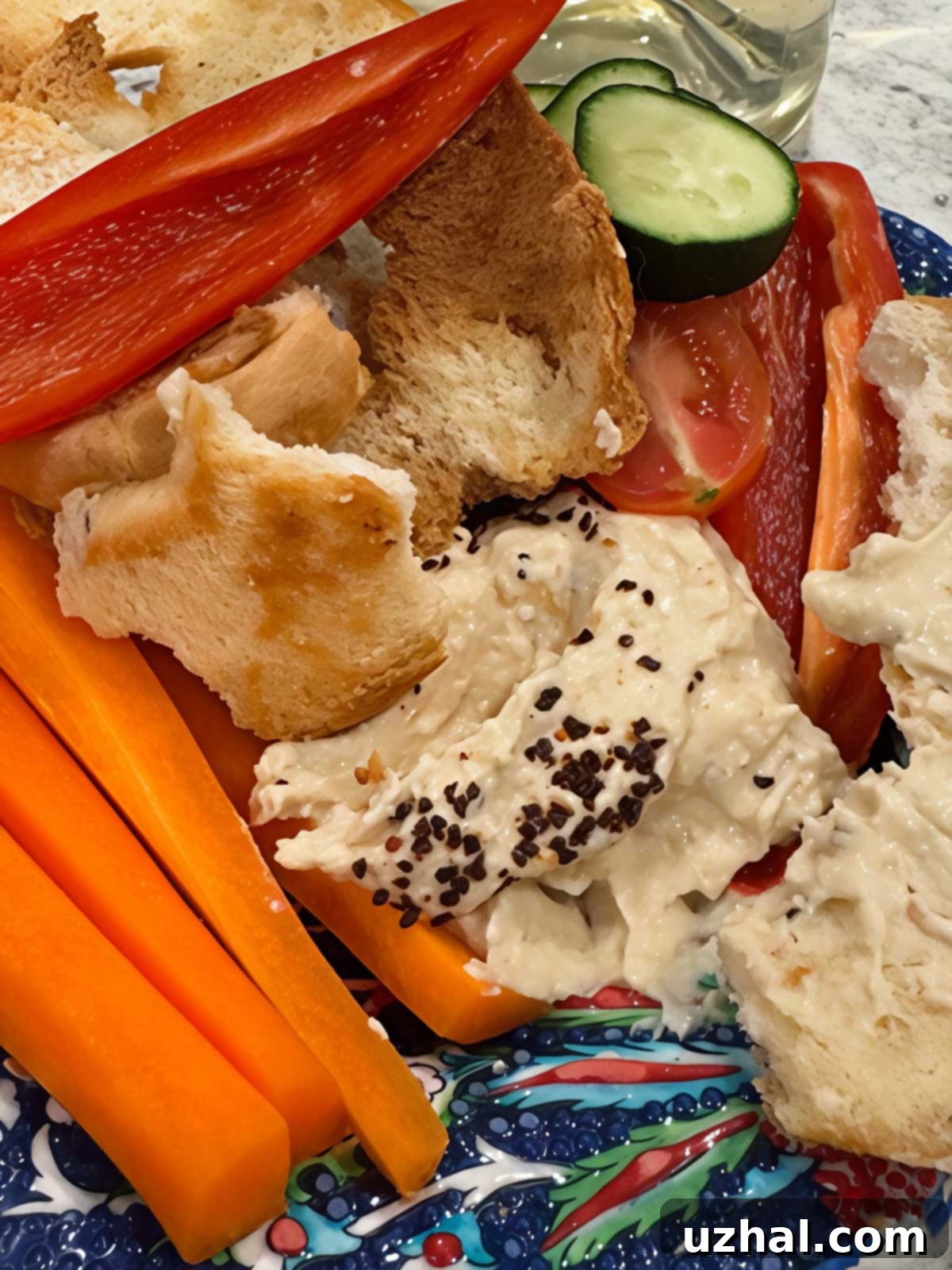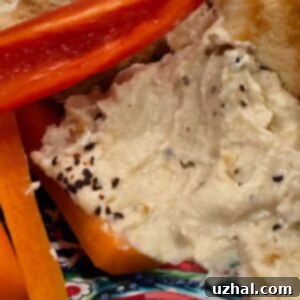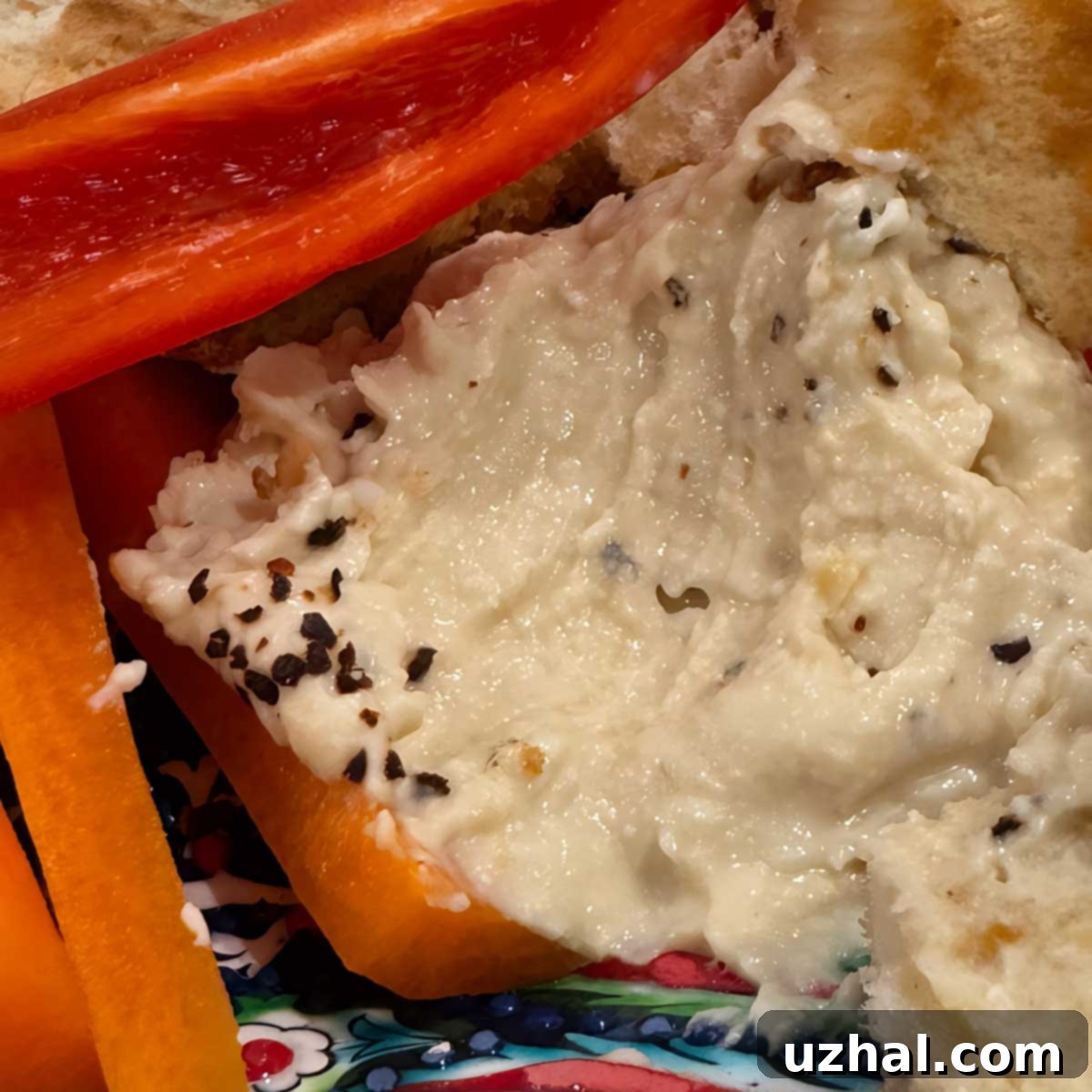The Ultimate High-Protein, Low-Fat Cottage Cheese Hummus: A Creamy, Healthy Dip
Say goodbye to traditional hummus and embrace a healthier, equally delicious alternative: Cottage Cheese Hummus. This innovative recipe reimagines the beloved Middle Eastern dip by substituting a significant portion of the extra olive oil with cottage cheese. The result is a wonderfully creamy, velvety texture that’s lower in fat but packed with an impressive boost of protein and calcium. It’s a game-changer for anyone seeking a nutritious yet indulgent snack or appetizer.

Jump to Recipe
The beauty of this high-protein hummus recipe lies in its versatility and ease of customization. While many find joy in its simple form, spread over a toasted pita and adorned with crumbled feta cheese, crunchy toasted walnuts, fresh cilantro, and a dash of black pepper, the possibilities don’t end there. Imagine pairing this creamy dip with crisp bagel chips, fresh vegetable sticks, or even as a flavorful spread in sandwiches and wraps. Its mild yet rich flavor profile makes it a fantastic canvas for various toppings and serving styles, ensuring you never tire of this healthy hummus.
Over time, tastes evolve, and recipes often benefit from refinement. Since the original posting of this low-fat hummus, I’ve found that enhancing the amount of spices significantly elevates its flavor. The initial version, with just one clove of garlic and one tablespoon of lemon juice, was a good start, but personal preference has led me to embrace a bolder profile. Now, I typically use up to three cloves of garlic, which adds a more robust and aromatic depth to the dip. Similarly, the amount of lemon juice can be adjusted to your liking; a range of two to four tablespoons allows for varying degrees of zestiness. On occasion, I even incorporate a teaspoon of honey – not to sweeten it, but to unlock and amplify the other flavors, making them “pop” in a truly remarkable way without making the hummus sweet.

Achieving Silky Smoothness: Cottage Cheese in a Vitamix (or Food Processor)
After years of dreaming, I finally invested in a Vitamix, and it has revolutionized my kitchen. While it’s incredible for many things, pureeing cottage cheese into that ultra-smooth, almost whipped consistency requires a little patience and technique, even for a powerful machine like the Vitamix 5200. It might sound like it’s working hard, but rest assured, it’s designed for this. Using the tamper is crucial here; it helps push the thicker ingredients down into the blades, ensuring an even and consistent blend. You might also find that a smaller container works more efficiently for smaller batches of thick dips like hummus, as the standard 5200 container is quite large. However, even with the larger container, I was able to achieve an incredibly smooth, almost whipped state for this homemade hummus, a texture that truly sets it apart.
For those without a Vitamix, a standard food processor will also do an excellent job. The key is to blend longer and scrape down the sides of the bowl frequently to ensure all the cottage cheese and chickpeas are fully incorporated and pureed. You might need to add a touch more liquid (lemon juice or even a tablespoon of ice water) to achieve the desired consistency, especially if you’re aiming for that light, airy texture. The goal is to break down any curds from the cottage cheese and ensure a uniform, creamy dip. Don’t rush the process; a few extra minutes of blending can make all the difference in achieving the perfect consistency for your creamy cottage cheese dip.
The Nutritional Power of Cottage Cheese Hummus
This isn’t just a delicious dip; it’s a nutritional powerhouse. Traditional hummus is healthy, but often relies on a significant amount of olive oil for its creamy texture, which can increase its calorie and fat content. By integrating cottage cheese, we maintain that desired creaminess while significantly boosting the protein content and reducing overall fat. Cottage cheese is renowned for its casein protein, a slow-digesting protein that helps you feel fuller for longer, making this an ideal snack for weight management or for fueling your body after a workout. It also brings a good dose of calcium, essential for bone health.
Combined with the fiber-rich chickpeas, heart-healthy tahini, and antioxidant-packed garlic and lemon, this healthy hummus recipe offers a balanced profile of macronutrients and micronutrients. It’s a smart choice for anyone looking to incorporate more plant-based protein, healthy fats, and dietary fiber into their diet without sacrificing flavor or satisfaction. This makes it an excellent option for a variety of dietary needs, from those following a Mediterranean diet to individuals simply seeking healthier snack alternatives.
Deep Dive into Ingredients: Flavor and Function
Each ingredient in this Cottage Cheese Hummus plays a vital role, not just in flavor, but also in texture and nutritional value.
- Garbanzo Beans (Chickpeas): The undisputed foundation of any hummus. They provide a dense, earthy base and are a fantastic source of plant-based protein, dietary fiber, and complex carbohydrates. Draining and rinsing canned chickpeas is crucial to reduce excess sodium and prepare them for blending.
- Garlic: A non-negotiable for authentic hummus flavor. The fresh garlic cloves bring a pungent, aromatic kick that is both warming and invigorating. Adjusting the quantity from 1 to 3 cloves allows you to tailor the intensity to your preference, from subtle undertone to a bold statement.
- Tahini: This rich sesame seed paste is key to hummus’s signature nutty flavor and smooth, almost airy texture. It also contributes healthy monounsaturated and polyunsaturated fats, alongside vitamins and minerals. Don’t skip it; tahini is essential for that authentic hummus depth.
- Cottage Cheese (Low Fat): The star ingredient that sets this recipe apart. It replaces some of the oil, providing creamy texture, a tang, and a significant protein boost. Using low-fat cottage cheese helps keep the calorie and fat count down while delivering maximum creamy impact.
- Lemon Juice: Freshly squeezed lemon juice brightens the entire dip. Its acidity cuts through the richness of the tahini and cottage cheese, elevating all the other flavors. Adding it gradually and adjusting to taste ensures the perfect balance of tang.
- Cumin: This earthy, warm spice is synonymous with Middle Eastern cuisine and is critical for the classic hummus flavor profile. It adds a layer of depth and aroma that is instantly recognizable.
- Salt: Essential for seasoning and bringing out all the other flavors. Start with the recommended amount and adjust to your palate.
- Aleppo Pepper or Smoked Paprika (for garnish): These aren’t just for color; they add subtle notes of warmth (Aleppo pepper) or smokiness (smoked paprika) that beautifully complement the creamy dip. A final flourish that makes the hummus visually appealing and more flavorful.
- Chocolate Chip Pecan Cookie Bars
- German Chocolate Cake Recipe
- Cottage Cheese Cookies
- Cottage Cheese Chocolate Bread
- Butter Crunch Lemon Cottage Cheese Bars
Recipe

Cottage Cheese Hummus
Anna
Pin Recipe
Ingredients
- 15 oz can garbanzo beans, drained and rinsed
- 3 cloves garlic, peeled (adjust to taste)
- 2 tablespoons tahini
- ½ cup cottage cheese (low fat, for best texture and nutrition)
- 2-4 tablespoons fresh lemon juice (plus more to taste, for brightness)
- ½ teaspoon ground cumin
- ¼ teaspoon salt (plus more or less to taste)
- Aleppo pepper or smoked paprika (for garnish, optional)
- Optional: 1 teaspoon honey, for enhanced flavor
Instructions
-
Combine the drained and rinsed garbanzo beans, peeled garlic cloves, tahini, cottage cheese, lemon juice, cumin, and salt in a high-speed blender (like a Vitamix) or a food processor. Process on high, stopping frequently to scrape down the sides of the bowl. Continue blending until the mixture is completely creamy and smooth, with no visible curds from the cottage cheese. If the mixture is too thick, add an additional tablespoon of lemon juice or a tiny splash of water until desired consistency is reached. Taste and adjust seasonings as needed, adding more lemon, salt, or garlic if preferred.
-
Transfer the finished Cottage Cheese Hummus to a serving bowl. Garnish with a sprinkle of Aleppo pepper or smoked paprika, if using, and serve immediately with your favorite dippers or spread.
Serving Suggestions & Creative Pairings
The beauty of this high-protein cottage cheese hummus extends beyond its delicious taste to its incredible versatility. While it’s fantastic with classic dippers, don’t hesitate to get creative:
- Classic Dippers: Warm pita bread (toasted or fresh), pita chips, bagel chips, pretzels, or a variety of fresh vegetables like cucumber slices, carrot sticks, bell pepper strips, celery, and cherry tomatoes.
- Elevated Appetizer: Spread a generous layer on crostini or small crackers, then top with a drizzle of quality olive oil, a sprinkle of fresh herbs (parsley, dill, or mint), Kalamata olives, or even a few capers for an extra burst of flavor.
- Savory Spreads: Use it as a healthier alternative to mayonnaise or other spreads in sandwiches, wraps, or even as a base for open-faced toasts. It pairs wonderfully with turkey, chicken, or grilled vegetables.
- With Main Meals: Serve alongside grilled chicken, fish, or falafel. It can also complement a grain bowl or a large salad, adding a creamy, protein-rich element.
- Breakfast Boost: Surprisingly, this hummus can be a great addition to breakfast! Try it on a slice of avocado toast, or dollop it next to scrambled eggs for a Mediterranean-inspired start to your day.
Feel free to experiment with your favorite toppings and garnishes. A swirl of extra virgin olive oil, a scattering of toasted pine nuts, a dusting of sumac, or even finely chopped sun-dried tomatoes can transform the presentation and flavor of your creamy hummus.
Storage and Make-Ahead Tips for Your Cottage Cheese Hummus
One of the many benefits of making your own healthy hummus is the ability to prepare it in advance. This cottage cheese hummus stores beautifully, making it perfect for meal prep or entertaining.
- Refrigeration: Store any leftover hummus in an airtight container in the refrigerator for up to 5-7 days. For best results, press a piece of plastic wrap directly onto the surface of the hummus before sealing the container. This prevents a “skin” from forming and helps maintain its freshness and creamy texture.
- Serving Temperature: While it’s fine to eat straight from the fridge, the flavors of the hummus truly shine when it’s allowed to come to room temperature for about 15-20 minutes before serving.
- Freezing: Freezing hummus can alter its texture slightly, making it a bit grainier upon thawing. However, if you have a large batch and wish to freeze it, place it in an airtight, freezer-safe container, leaving some headspace for expansion. Thaw overnight in the refrigerator and stir well before serving. You may need to re-blend briefly or add a tiny splash of lemon juice to restore its original creaminess.
Why Choose Cottage Cheese Hummus?
In a world full of delicious dips, why should Cottage Cheese Hummus earn a permanent spot in your culinary repertoire? It’s simple: it offers the best of both worlds. You get the familiar, comforting flavors of hummus – the earthy chickpeas, the nutty tahini, the bright lemon, and the aromatic garlic and cumin – but with a significant upgrade in its nutritional profile. It’s a strategic swap that doesn’t compromise on taste or texture.
Whether you’re conscious about your fat intake, looking to increase your daily protein, or simply want to try a novel and delicious take on a classic, this low-fat, high-protein dip delivers. It’s perfect for health-conscious eaters, fitness enthusiasts, or anyone who appreciates a simple, flavorful, and incredibly satisfying snack. Give this recipe a try, and discover your new favorite way to enjoy hummus!
